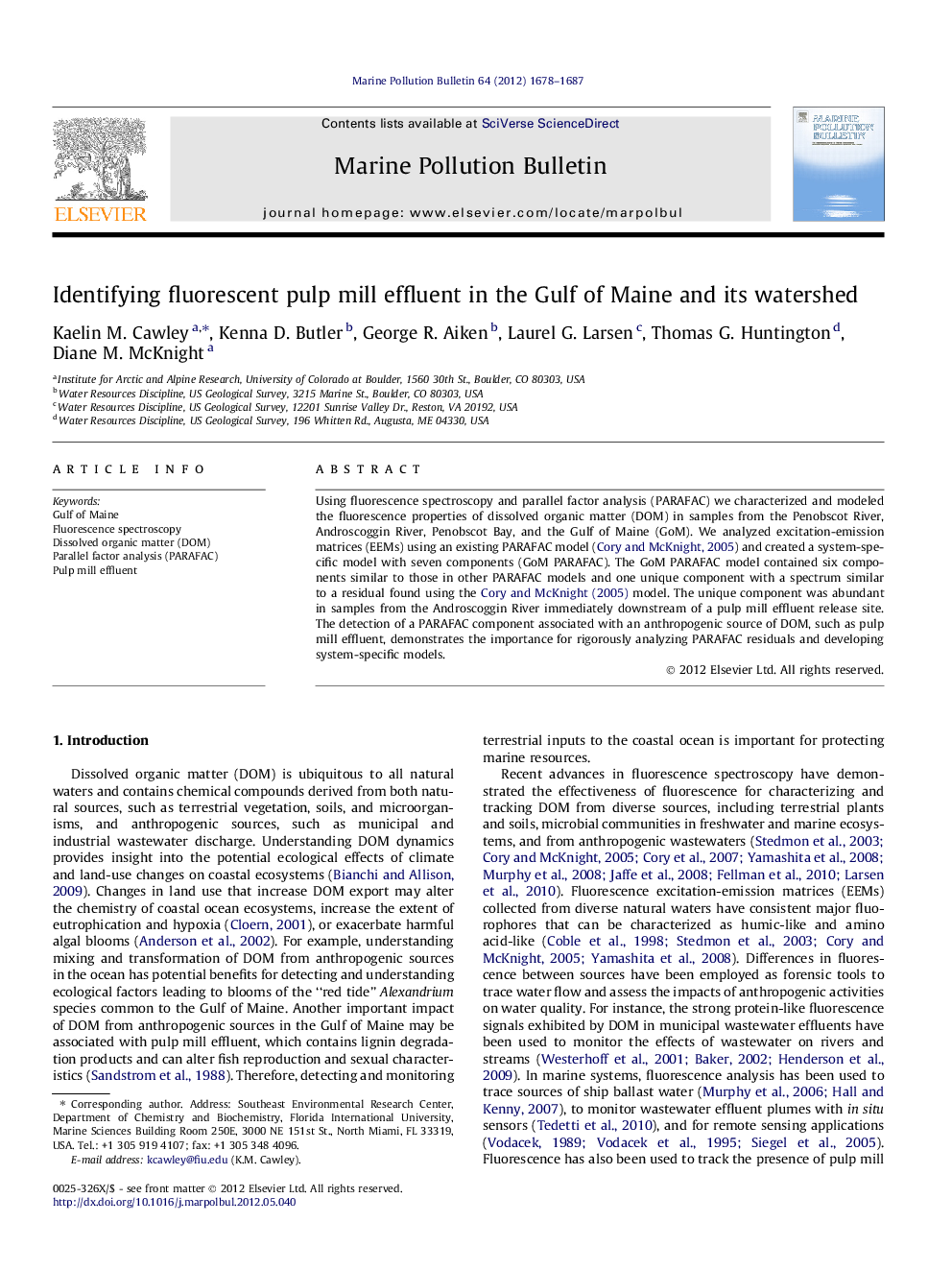| Article ID | Journal | Published Year | Pages | File Type |
|---|---|---|---|---|
| 6361480 | Marine Pollution Bulletin | 2012 | 10 Pages |
Using fluorescence spectroscopy and parallel factor analysis (PARAFAC) we characterized and modeled the fluorescence properties of dissolved organic matter (DOM) in samples from the Penobscot River, Androscoggin River, Penobscot Bay, and the Gulf of Maine (GoM). We analyzed excitation-emission matrices (EEMs) using an existing PARAFAC model (Cory and McKnight, 2005) and created a system-specific model with seven components (GoM PARAFAC). The GoM PARAFAC model contained six components similar to those in other PARAFAC models and one unique component with a spectrum similar to a residual found using the Cory and McKnight (2005) model. The unique component was abundant in samples from the Androscoggin River immediately downstream of a pulp mill effluent release site. The detection of a PARAFAC component associated with an anthropogenic source of DOM, such as pulp mill effluent, demonstrates the importance for rigorously analyzing PARAFAC residuals and developing system-specific models.
⺠We detected a pulp mill effluent-derived signal in the Gulf of Maine watershed. ⺠We present a novel way to characterize DOM using residuals of PARAFAC models. ⺠We compared site-specific and existing PARAFAC models using quantitative statistics. ⺠Results suggest value for system-specific models for detecting aquatic contaminants.
